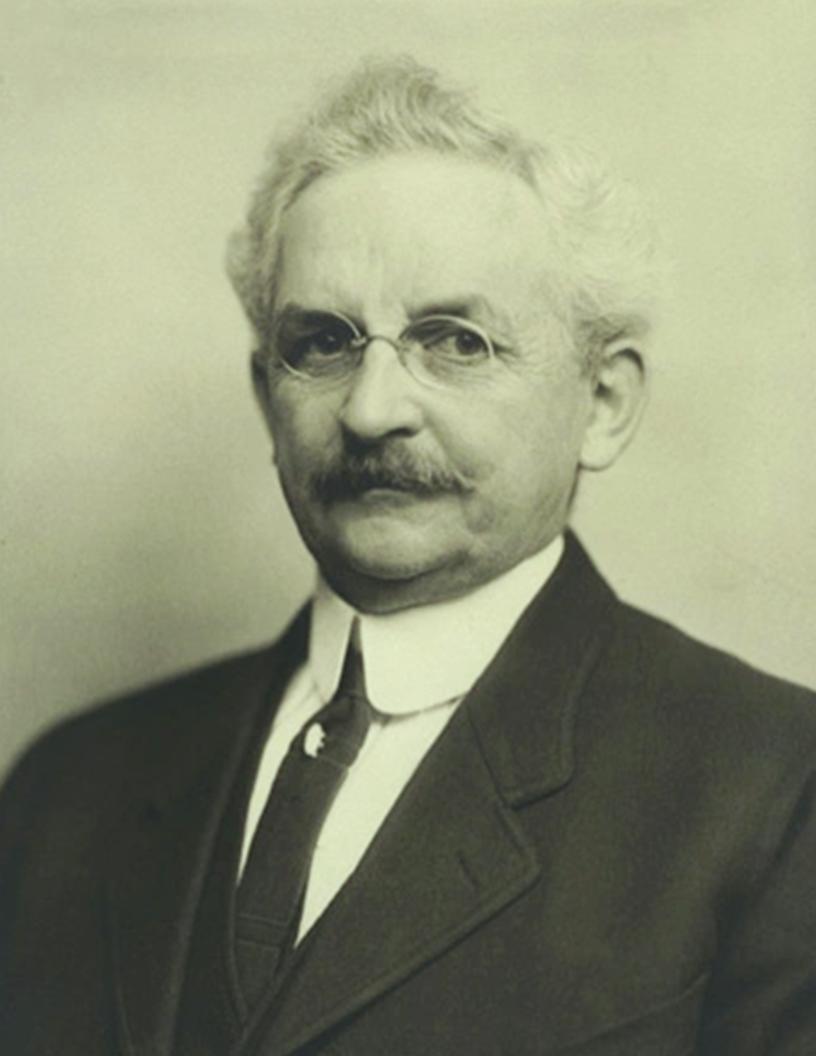
As the Reverend William M. Beauchamp writes in his book Past and Present of Syracuse and Onondaga County: From Prehistoric Times to the Beginning of 1908, Edward Trump was a descendant of Martin Harpertsen Tromp, “a celebrated admiral of the Dutch Navy.” The first representative of the name shows up in Pennsylvania in the 17th century. Edward’s grandfather, Charles Trump, moved to Baltimore in the late 17th or early 18th century, where Edward’s father, Charles Newbold Trump, was born. Newbold Trump became a mechanical engineer and later married Helen Mathews Needles, whose father, John Needles, was a promoter of the underground railroad, according to Beauchamp. Needles left significant written records of his work.
A Syracuse Journal Article from Saturday, July 28th, 1934 states, “Edward Needles Trump played an important part in the early development of the Solvay Process Company. Trump was born in Philadelphia in 1857 and after technical education [at Cornell University] and experience, [he] came to Syracuse in 1882 as assistant to Mr. Cogswell. He was made chief engineer of the Solvay Process Company in 1893 and in 1913 was a vice president. He later resigned that post to become consulting engineer.”

Edward N. Trump’s home at 1912 West Genesee Street (Courtesy of Syracuse Then and Now)
Edward began his professional career at the age of 15, when he began an apprenticeship with the machinist at his father’s shop in Delaware. From there, he attended Cornell University and pursued a two-year mechanical engineering degree after Cornell and Syracuse University Professor John E. Sweet convinced him to do so. After college, he returned to Delaware “as assistant superintendent of a factory devote to the manufacture of beet sugar…until 1881” where he gained “considerable knowledge of chemical engineering.” Sweet would help Edward a second time when, in the early 1880s, he recommended to W.B. Cogswell, who recently began to manufacture soda ash near Syracuse, that he bring in Edward as an engineer, which he did in 1882. The following year, he married Katherine M. Croasdale and had two kids, Charles and Marjorie.
According to Kihm Winship,
“Between 1890 and 1893, Trump designed one of the first rotary furnaces for making Portland cement, and designed and built the first plant in the U.S. to purify bauxite and make aluminum. He developed the processes for the products made by the Solvay Process Co., and served as General Manager of the Semet-Solvay Company, where he built coke plants that furnished gas to nearby municipalities, coke to iron furnace plants, and recovered by-products such as ammonia for other uses. If a process didn’t exist to create something, he invented it, designed the machinery to make it a reality, and ran the plant that housed the machinery.”
The Solvay Public Library has Edward Trump’s full history of the Solvary Process Company.
Rachel Bulley Trump married Charles Trump, Edward’s son in March of 1917. A Post Standard article on March 10th describes some of their wedding day, taking palce at the family home at 1912 West Genesee Street.
“Miss Rachel Bulley, daughter of Mr. & Mrs. Reginald Hargreaves Bulley of Ostrom Avenue, will become the bride of Charles Croasdale Trump, son of Mr. and Mrs. Edward Needles Trump, at the home of her parents this evening. About one hundred relatives and intimate friends have been invited to the ceremony, which will be performed by Rev. John H. Applebee, pastor of May Memorial Church. Late in the evening the bride and bridegroom will leave for a wedding trip of a few weeks, after which they will go to Del Rio, Texas, where they will make their home for a time.”
Rachel was known for doing portraits and painted over 1,000 in her lifetime. She had attended the Goodyear-Burlingame School (a private high school in Syracuse) and graduated from Syracuse University in 1912 with a major in painting. She moved out of the area after marriage, but spent several decades summering in Skaneateles where her husband’s family lived. After she developed bursitis in her right shoulder in the 1930s, the artist discovered that she could paint just as well with her left hand. She also had custom eyeglasses made in which she could look at both her painting and her subject without moving her head. One of her works is currently on display (as of 8/22/2016) in an exhibit on women artists from Syracuse in OHA’s collection.
Sources:
Post Standard
Reverend William M. Beauchamp’s Past and Present of Syracuse and Onondaga County: From Prehistoric Times to the Beginning of 1908

